Japanese Quince / Spring / Summer / Autumn / Winter / Edible
Japanese Quince is a non-native, thorny deciduous shrub, popular in gardens for its attractive flowers and fruit. it is generally quite compact but can grow up to 2 metres tall.
Common Names
Japanese Quince, Maule’s Quince, Northern Lemon, Flowering Quince
Botanical Name
Chaenomeles Japonica
Scientific Classification
Kingdom – Plantae
Order – Rosales
Family – Rosaceae
Physical Characteristics for Japanese Quince
Leaves
The leaves are lanceolate, glossy and toothed. Deep green in colour, up to 8cm long.
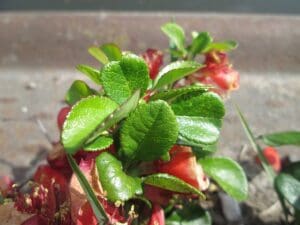
Flowers
The plant often flowers twice in a year. The main flowering period is in winter but in summer it can also produce flowers. The flowers are in clusters of 2-4 and are bright orange to red in colour with 5 rounded petals like a neat Apple or Cherry blossom. Up to 6cm across when fully opened.
Fruit
The fruits called Kusa-boke in Japanese look like small, yellow apples. They appear in autumn, are hard and highly perfumed. As the fruits are so hard and dry they can still be found in good condition right through winter.
Habitat
It’s a non-native species originally found in Japan and Asia. In the UK it’s mostly found planted as an ornamental in parks and gardens.
Known Hazards
None Known
Could be Confused with
There are many Chaenomeles species that can be found growing as ornamental’s in gardens, lots of them won’t produce fruits but any that do would be edible.
Edible Uses
The fruits can be eaten raw or cooked, they’re very tough and astringent and definitely get better after bletting or freezing for a couple of days. The taste is a mixture of citrus, pineapple and vanilla.
They have a similar taste and texture as the ‘true’ quince (Cydonia oblonga) and are great for making membrillo or quince cheese.
In Japan they are used to make jams, jellies and liquors, I like them added to tagines and couscous.
They can be used as a substitute for lemons or limes.
Click here for our Quince Membrillo Recipe.
Notes on Herbal Uses
The juice contains more vitamin C than lemons, 100g of Japanese quince typically has 124-182 mg of vitamin C, while 100g of lemon juice contains 40-70 mg. The fruit also contains the elements potassium, magnesium, iron and copper.
In herbal medicine they are used as an anti-inflammatory to treat joint and muscle problems. It is also used as a general health tonic and to fight respiratory diseases.



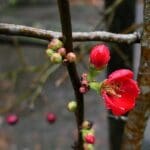
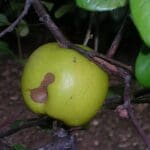
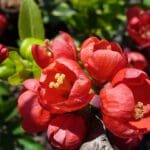
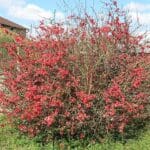
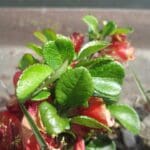
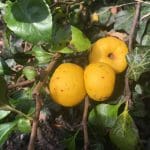



Leave a Reply
You must be logged in to post a comment.